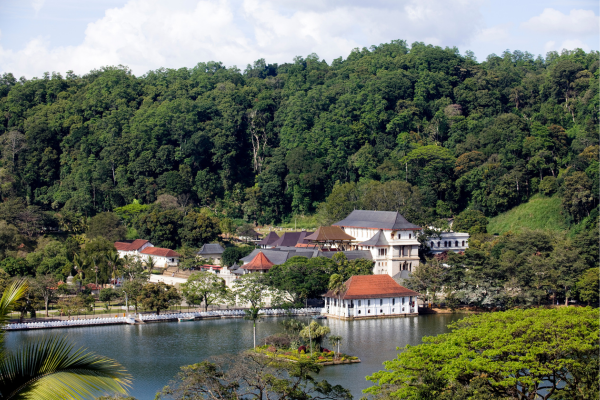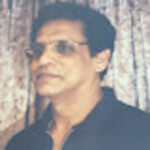When Kandy was the Capitol of Ceylon – By Dr. Tilak S. Fernando.


Up-country reign was divided into 21 sectors. Out of 21 sections, the kingdom was divided into 12 main sectors, with a separate section head (Disapathy) in charge of every section who possessed the executive powers (civil and war affairs). These Disapathys collected taxes from the king’s subjects and sent taxes to Kandy. Disapathys paid all the facilities of the king and paid to the government stores annually. They rented land not for the money but for their service to the King.
However, economic growth cannot be compared with Anuradhapura and Polonnaruwa eras. It was mentioned that, unlike the dry zone, up country being a wet zone, there was adequate water supply in the up-country in both seasons (yala & maha) because of the river’s waterways were available adequately. Apart from that, some rivers and waterways made the earth retain water which would be ideal for agriculture. During the 17th century kings in the upcountry didn’t say much because they didn’t have to do much apparently. However, due to political reasons and the independence of the nation, some kings had to do various things.
That may be why some of the kings had to do something due to political reasons, the security, and economic establishment of the country. King Wimaladharmasuriya was one of them who took some action. The hill country made some progress and founded several foundries and encouraged the cotton industry. It was mentioned in the Mandaram news. During the Kandy reign there were under-mentioned table gives in detail how the income of the King was generated:
1 Whenever a King was crowned, all the gifts were offered to the King by all Adikarms, Disapathies, and senior officials
- After the New Year, what are senior officials paid to the treasury annually?
3 Out of Royal Stores bags of rice and paddy.
- Out of royal estates and lands the produce.
- Out of the areca nut income of all ‘Koralyas,’ main establishment, including all three ‘Koralayas’ on areca nuts.’
6, The King possessed the sole ownership of precious stones.
- Kada Service (Marala Badda) – if a person dies who owned cattle (a calf, a cow, or even a buffalo) had to be given to the King. Kada service (Land tax)- during the Kandy Reign (the land tax) was the main tax form.
SOCIETY, OCCUPATION, AND THEIR SOCIAL STANDING
During the Kandy reign, the income came to the king by land tax.
One remarkable feature of the upcountry regime was that those who lived in the King’s Palace, known as the Pariwahara, enjoyed special privileges. The upcountry kingdom had a unique system of distributing land (Badawadili) to those who lived in the Palace.
The king’s Ministers were known as Nilames, Adi Karam, and Chief Adikam. When they toured ordinary people had to pay respect to them. Anyone, except the royal family, was banned to sit in the presence of Nilames. When Adikarms walk, others had to get to a side. A very special costume adorned the Adikarms. Regarding Kath Rice Service- the entire reign had organised the number of paddy seeds to be handed over to the Kath Idam (ekkayanta ) organisations and the amount of spreading of paddy seeds was taken into account, and out of this common tax was exonerated from the farmers. If anyone did not pay the tax (as there were records in the royal office) the person who avoided tax could be jailed in a store. Dugganna Ralas declared those who were dead.
In 1817 John Doyley and James composed the name list of the up-country Nilames
- Second Adikarms.
- Sathara Korale Dissawa
- Hath Korale Dissawa
- Mathale Disawa
- Sabaragamuwe Dissawa
- Udunuwara Rate Mahattaya
- Yati Nuwara Rate Mahattaya
- Thunpane Rate Mahattmaya
- Haarrispatthuwa Rate Mahattmaya
- Dum bara Rate Mahatmaya
- Hewahata Rate Mahtmaya
- Meemure Rate Mahatmaya
- Kotmale Rate Mhatmaya
- Uda Bulathgama Rate Mahatmaya
- Paatha Bulathgama Rate Mahatmaya
- Maha Diyawadana Nilame
- Pallewagla Diyagabawadna Nilame
- And Maha Gabada Nilame
Extra list of Munandirams.
- White cattle class Munandiram (Sudu Harak Panthiye).
- Kuttaga Secretaires (Cavum Badda sparu pugagalala yande praddaniya).
- Lunu bade Pradniya (The official who collected the Salt tax).
- Patti Vidana
- Poropakara Munandiram (The chief officer who fells trees.)
- Uve Gon Baddsathsare Pradaniya (The official who transports goods).
- All Sathara Korale Madage and Wadige Karyance chiefs (They were Muslims)
- Pahatha Bulath Gama Chief neli
Everywhere agriculture existed, there were paddy fields. Everyone’s livelihood depended on successful paddy farming, unlike in the flat land framers creating on precipices. Dry Land farming was done beautifully and systematically. Dryland and what was known as adakku. It became a family requirement such as coconut; areca nuts, vegetables, firewood, and grass, as home supplies, except for clothes, salt, etc; which villagers made by themselves.
Every small village consisted of 8-10 houses, whereas there were more than 100 houses in large villages. The ownership of homes depended on the service to the King. When the farmland hires another person to work on the paddy field, the lender had to give the owner a box of rice and paddy ten nelis.
In Kandy, it was believed that there were many forests. Without the king’s permission, it was illegal to do any agriculture. During this era, the land was distributed in different ways. Everything that belonged to the king and was allocated to the treasury was named Gabada land,
Industries and Technology.
Because agriculture was given a prominent place, irrigation was given prominence. Knox had named the hill country as follows: ‘He could clear the earth flat, and did irrigation work. No slopes or mounds were seen when he made it to flat land. According to the precipice, steps were completed. Liyadda in the paddy field was divided in such a way that the earth was moved and flattened so that from bottom to the top, it looked like a flight of steps. He made it from the top of the hilly side so that the water flew to the precipice. Hoo sound was usually made into practice. Two ‘hoowas’ were equivalent to a man who could carry a log without being tired. Four miles were equivalent to a Gawwa. Generally, a Gawwa is equivalent to any journey less than 10 miles. Each land was categorised in a different way. For instance, whatever lands allocated through the treasury were named idam Gabda; daily royal workers were named Vidana idam, permanent royal worker’s lands were named Wasm idam, personnel, vihara, and religious land as vihara gam and I’m sorry, but “devala gam.”
Apart from specific numbers in the military services, during emergency situations, there was a method of recruiting members to the military service existed. In 1821John David devised methods according to the cast system that prevailed.
Vaishada Wansaya.
- Govi Wansaya (Agriculture), Includes Ved – Tailedas.
- Nilamakkara (Patti) Shepherds.
Ikrasdra Wansaya
- Karawa (fisher folk)
- Baantho (Dur (Taileawe) Toddy Tappers
- Achari, Black.
- Sannali (Tailers).
- Badam Hela, Kubaalu).
- Ambattayo, Pannkki.
- Rada Badda (Dhobis)
- Hali, Chariwaru (ie:Halasgama)
- Hunu Badda, those who produce chalk.
- Pannayo, (who cut grass),
- Villidarai (a province in Kandy)
- Theda Veddo (hunting Veddas).
- Padu (those who melt Iron ,Gahalayo)
- Berawa Badda or Mahabadda, Drummers.
- Hedi (Those who supplied Boxes and spices to the Royal stores
- Pallara
- Oli
- Radayo.
- Pali (A lower cast than Kumbal Kuleena- Dhobies
- Kinara Badda.
Society did not accept those categories
- Ganna
- Rodi
End.
Courtesy: The writer translated into English from the text of the late Prasad Milinda Siriwardena, Ceylon Economic Analysis between BC 543 to 1832. The only relevant sections were extracted out







